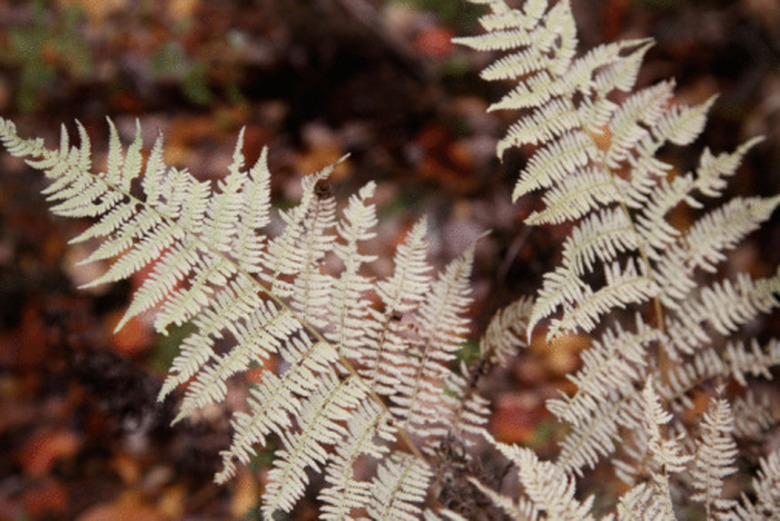How Does A Fern Plant Transport Water & Nutrients?
Ferns are among the oldest plants on Earth with a vascular system, a network of vessels in their stems and leaves that transports water and minerals from the roots and sugars from the leaves and distributes them throughout the plant.
Water
Water
Ferns contain a simple root system that absorbs water, like the root systems of later evolved plants. Once water has entered into the fern's roots, it passes into a vessel called the xylem, which extends up the fern's rhizome, or stem, and into the leaves. As water evaporates from the leaves, it pulls water up from the roots, similar to how water moves up a drinking straw. The water that doesn't evaporate powers the energy-generating process of photosynthesis.
Minerals
Minerals
Ferns require several mineral nutrients to survive, which they obtain from the soil. Fern roots pump minerals into the roots, where the minerals enter the xylem, dissolve in water there and disperse throughout the plant.
Sugars
Sugars
In the fronds of ferns, photosynthesis rearranges molecules of carbon dioxide and water and produces sugar to use as energy. Ferns move sugar throughout the plant using a set of vessels called the phloem. Once the sugars reach an area where they're needed, special phloem cells called companion cells pump sugar out of the phloem vessel and into the needy cell.
Cite This Article
MLA
Walls-Thumma, Dawn. "How Does A Fern Plant Transport Water & Nutrients?" sciencing.com, https://www.sciencing.com/how-does-a-fern-plant-transport-water-nutrients-12443304/. 21 July 2017.
APA
Walls-Thumma, Dawn. (2017, July 21). How Does A Fern Plant Transport Water & Nutrients?. sciencing.com. Retrieved from https://www.sciencing.com/how-does-a-fern-plant-transport-water-nutrients-12443304/
Chicago
Walls-Thumma, Dawn. How Does A Fern Plant Transport Water & Nutrients? last modified March 24, 2022. https://www.sciencing.com/how-does-a-fern-plant-transport-water-nutrients-12443304/
